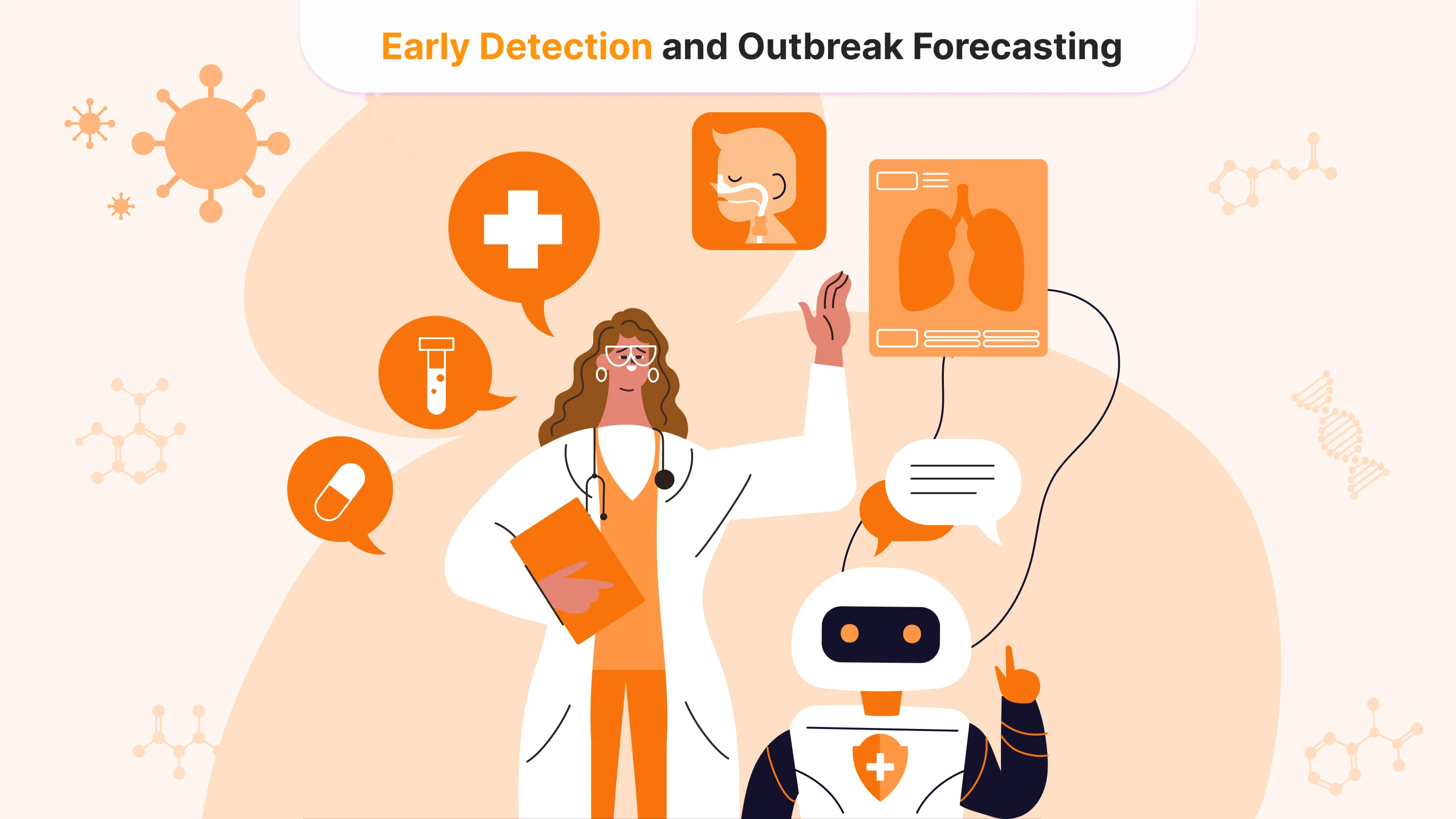

AI-Driven Diagnostics for Infectious Disease Outbreaks: From Crisis Response to Predictive Intelligence
The COVID-19 pandemic was a brutal lesson in the limits of our global diagnostic infrastructure. PCR labs were overwhelmed. Supply chains for swabs and reagents collapsed. Case detection lagged by days, sometimes weeks. By the time many health systems confirmed an outbreak, exponential growth had already taken root.
While artificial intelligence has existed for decades, the pandemic marked its emergence as a frontline force in public health. Not as a replacement for clinicians, but as a force multiplier — scanning global data feeds, spotting anomaly clusters, triaging risk, and increasingly, helping to identify pathogens in real time. AI didn’t eliminate the crisis. But it did prove one thing: with the right systems in place, we can act faster, smarter, and more equitably when the next outbreak strikes.
Today, we stand at a crossroads. AI is no longer a futuristic buzzword in global health — it’s a necessity. But are we building systems that serve the global good, or just patching broken pipelines?
From Surveillance to Precision: A Shift in Diagnostic Logic
AI’s contribution to infectious disease diagnostics can be broken into two primary domains: early detection and rapid identification.
Early Detection and Outbreak Forecasting

In December 2019, while most governments were still unaware of what would become COVID-19, BlueDot’s algorithm flagged a cluster of unusual pneumonia cases in Wuhan. Drawing on over 100,000 sources in 65 languages, including airline ticketing data, it correctly predicted international spread patterns — a full nine days before the WHO’s announcement. That’s not just a speed advantage — that’s time for containment.
Another example: HealthMap, a project out of Boston Children’s Hospital, uses machine learning to extract disease signals from news reports, social media, and official bulletins. It helped track Ebola outbreaks in West Africa and measles resurgence in Europe, showing how hybrid systems (AI + human verification) can scale public health intelligence.
AI-powered nowcasting models, such as Google’s “AI Flu Trends” (resurrected in different forms), also enable real-time estimates of disease prevalence, especially where traditional surveillance is weak or delayed.
Rapid Diagnosis at Point of Care
Diagnostics don’t just inform policy — they save lives on the ground.
In India, where tuberculosis kills over 400,000 people annually, AI is being deployed to interpret chest X-rays using tools like qXR by Qure.ai. Trained on over 2.5 million images, it can flag TB with >90% accuracy, helping reduce missed cases, especially in rural clinics with no radiologists.
In Rwanda, a collaboration between the Ministry of Health and Babylon Health (now known as eMed) piloted AI-assisted triage apps for early screening of infectious symptoms in remote regions. Integrated with community health workers, these tools help direct testing and isolation measures before escalation.
CRISPR-based diagnostics — like the Sherlock platform developed at the Broad Institute — are now being augmented with AI algorithms to recognize molecular signatures of Zika, Ebola, and COVID-19. These paper-strip tests, similar to pregnancy kits, could soon be paired with smartphone apps for instant AI interpretation, bridging high-tech and low-cost needs.
The Role of Big Data: Fueling the AI Engine
AI doesn't create insights from thin air — it needs data. Lots of it. Diverse, high-quality, and timely data streams are the raw material for intelligent diagnostics. And the explosion of such data is changing the diagnostic landscape.
Multi-Modal Data Inputs
AI systems now integrate:
Genomic sequencing (e.g., from nanopore devices)
Symptom logs from apps like Kinsa or FluSense
Wearable biosensor data (e.g., Fitbit’s heart rate anomalies linked to COVID-19)
Environmental signals, such as wastewater monitoring of poliovirus and SARS-CoV-2
Mobility patterns via mobile phone data or airline bookings
For instance, during the Omicron wave, South African researchers rapidly sequenced and shared genomic data that enabled global models to simulate transmission, vaccine escape, and expected surge timelines — all enhanced by AI pattern recognition.
Open-Source Power: The Case of Nextstrain
The Nextstrain project offers real-time tracking of pathogen evolution using open-access genomic data. With AI-enabled visualization, it maps how variants mutate and spread — a crucial tool for vaccine updates and travel policies. During COVID-19, it helped public health authorities prioritize Delta and Omicron monitoring weeks before mass transmission.
Yet despite its power, Nextstrain’s reliance on voluntarily shared sequencing data highlights a systemic vulnerability: without global cooperation, even the best AI models go blind.
Private Sector: Innovation or Isolation?
The most cutting-edge diagnostic AI often comes from private tech-biotech collaborations. Companies like PathAI, Google Health, and Delfi Diagnostics are developing systems that diagnose infectious and non-communicable diseases from blood, breath, or imaging, often using proprietary black-box models.
While this accelerates innovation, it raises questions:
Will these tools be affordable to low-income countries?
Can they be integrated into national systems?
Will private datasets ever be open to public health researchers?
For example, Google’s AI-assisted tuberculosis screening tool was validated on data from India and Africa, but remains part of a commercial pipeline. Without public access, governments may have to buy back life-saving insight developed using their own populations’ data.
The challenge is clear: if AI tools are to serve outbreak diagnostics equitably, public-private partnerships must emphasize open standards, cost transparency, and localization.
Challenges and Risks: The Devil Is in the Data
Infectious disease models trained on U.S. hospital data often fail when applied to rural Bangladesh or inner-city Nairobi. Why? Because underlying variables differ, from comorbidities to clinical workflows to lab availability.
A 2021 study in Nature Medicine found that over 70% of COVID-19 mortality prediction models were unusable due to bias, poor documentation, or lack of external validation.
In outbreak settings, false positives can cause panic, and false negatives can cost lives. But many deep learning models operate as black boxes, offering little clinical interpretability.
To build trust, initiatives like AI4COVID and OpenSAFELY emphasize explainable AI, where decision logic is visible, auditable, and modifiable by local health authorities.
In fast-moving pandemics, how can regulators assess AI tools quickly without compromising safety?
In 2022, the FDA created a “Predetermined Change Control Plan” allowing certain AI diagnostics to evolve post-approval. But global harmonization is lacking: what’s approved in the EU may not be in Africa, or may be too costly to deploy.
Conclusion: Between Promise and Preparedness
The COVID-19 pandemic made one thing abundantly clear: delay kills. And in an age of zoonotic spillovers, urban density, climate shifts, and global travel, infectious threats are only accelerating. Traditional diagnostics — slow, centralized, and reactive — are no match.
AI-driven diagnostics offer a radically different model: distributed, adaptive, and increasingly real-time. But to realize this promise, technology must be embedded in broader systems of governance, equity, and accountability. It’s not about the smartest algorithm — it’s about the smartest infrastructure.
In the next pandemic, seconds will matter. The question is: will we have machines — and policies — ready to listen?
Tell us about your project
Fill out the form or contact us

Tell us about your project
Thank you
Your submission is received and we will contact you soon
Follow us
